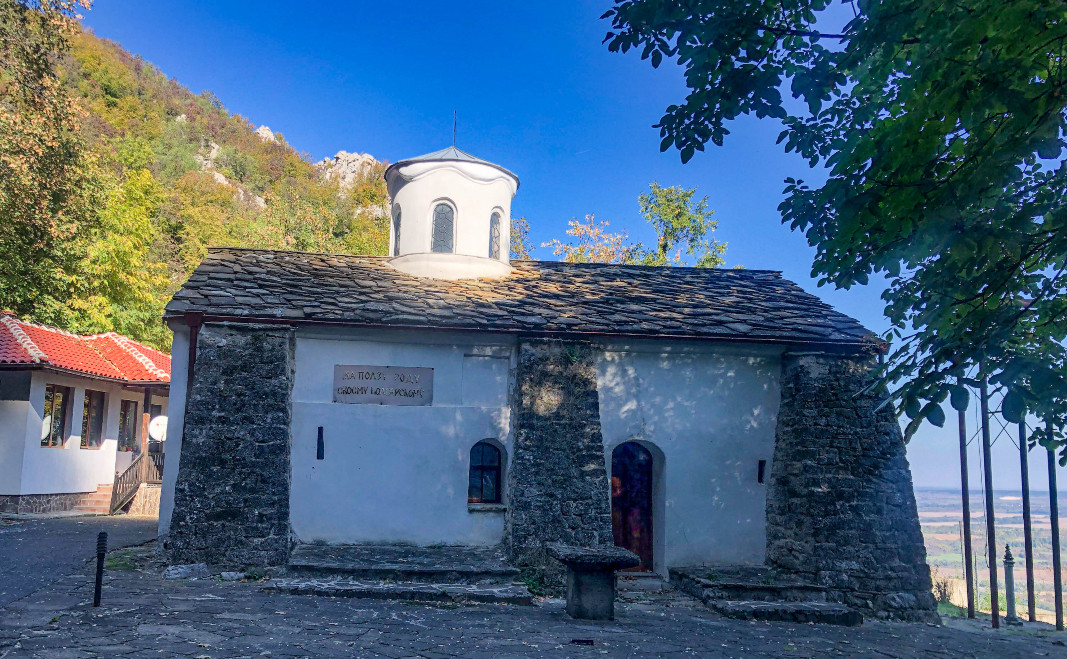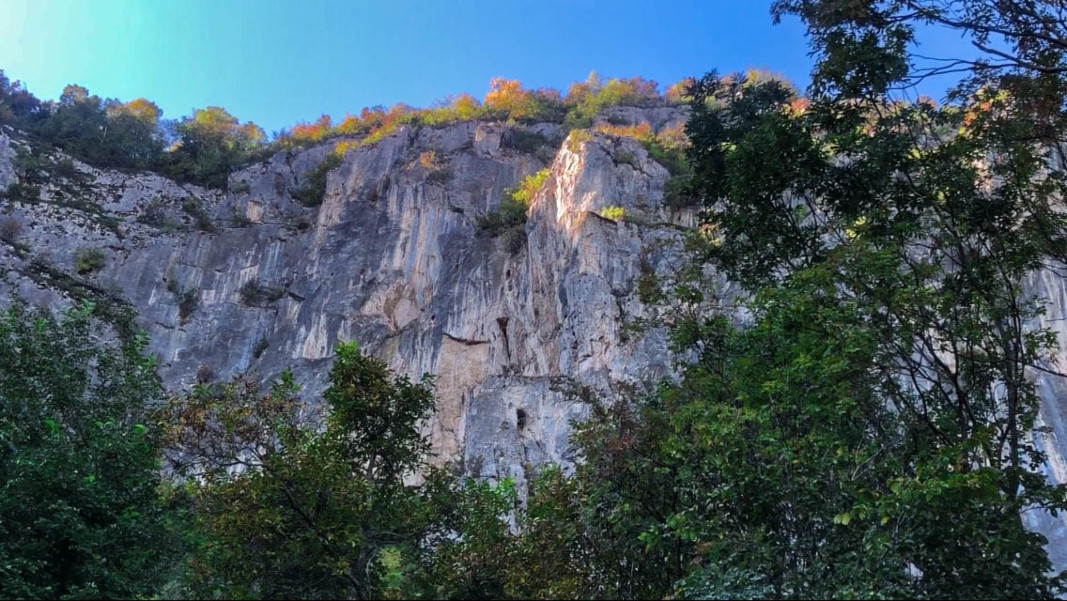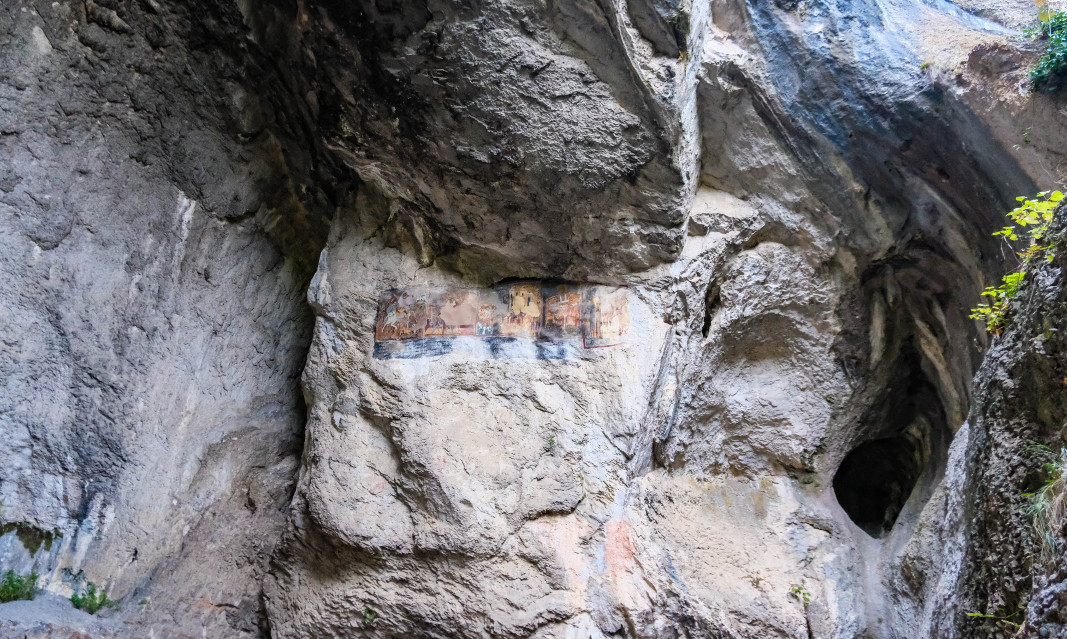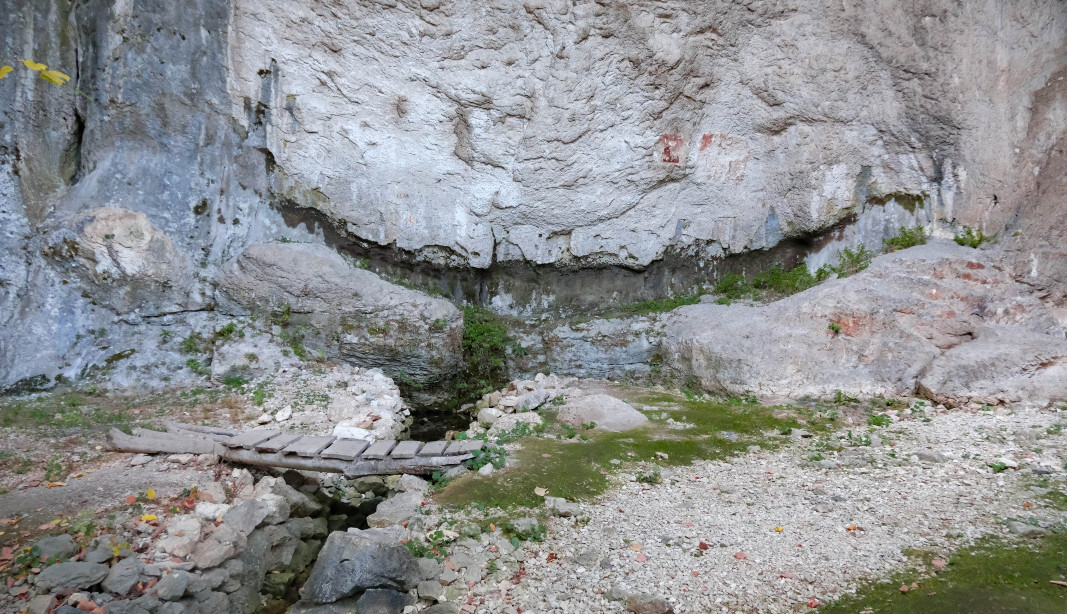St. Ivan of Rila, who lived in the 10th century, is considered to be the patron saint of Bulgarians. So, shrines, churches and chapels honouring him would appear wherever the saint lived or stopped to pray. Scattered in difficult-to-reach nooks and corners all over Bulgaria, some of these temples have grown to become strongholds of the Christian faith and education in the years of Ottoman domination. One such place is the monastery St. Ivan Kasinets, known also as St. Ivan Pusti, located some 10 kilometres from the town of Vratsa.
According to legend, Ivan of Rila spent 40 days in a small cave high up in the cliffs of a locality called Kasinets. These cliffs were inhabited since ancient times, evidence of which is the pottery found there, dated to the 1st millennium BCE. During the 12th century, hermits founded a monastery at the foot of the cliff with the cave of the saint, on the spot where there once existed a Thracian sanctuary. And even though it was so difficult to reach, through the ages the cloister has been destroyed and abandoned many times. That is why people came to call it St. Ivan Pusti (from pust – empty, deserted). However, the monastery church was named after another saint – John the Theologian. There, three layers of frescoes have been found, the earliest of them dating to the 12th century, says Nelly Stoyanova, curator of the Regional Museum of History in Vratsa and adds:

“During the time of Ottoman domination a literary school developed at the monastery, alongside a monastic school. Prominent Bulgarian writers and educators worked here, creating veritable masterpieces of liturgical books. The monastery had direct connections with donors and benefactors from Vratsa who helped make the monastery a centre of literature, education and the Christian faith. Handicrafts also flourished here – there was a goldsmith’s workshop here, as well as the first copper printing workshop in the Bulgarian lands. Some unique masterpieces of Bulgarian goldsmithery and jewellery art were created here, some of which are on display at the history museum in Vratsa.”

Right next to the monastery is the Big Cave – a high-vaulted hollow in the cliff, at the foot of which there is a karst spring, the waters of which are said to be curative. Experts say that the monastery workshops were actually inside the cave. But it is the frescoes on the rocky walls of the cave, which have survived down to our day, that are most striking:

“There are some really old inscriptions. It is thought that some of the frescoes are from the 14th century – they depict the life and deeds of St. Dimitar and St. Nestor. But experts say St. Dimitar is not depicted according to the iconographic canon. In one fresco he is seen riding a white horse, in another – sitting on a white throne, with all kinds of animals, snakes, lions etc., at his feet,” Nelly Stoyanova says.

These frescoes were restored in the 16th century, that is why their colours are still so vivid, and the pictures of the saints, though fading, are still so powerful. On the Western wall of the Big Cave there are traces of icons depicting St. Ivan of Rila and St. John the Theologian.

March 9 is the feast day of the Church of the Forty Martyrs in the town of Veliko Tarnovo - a place of exceptional importance for the Bulgarian statehood, which worthily preserves the memory of the glorious Tarnovo kings. On March 9, the..
Father Lyubomir Leontinow is one of three priests at the Cathedral of St Boris the Conqueror in Berlin and was the first priest ordained for the Western and Central European Diocese in 1994. After completing his theology studies in Bulgaria, he settled..
After Cheesefare (Forgiveness) Sunday, the Great Lent has begun on March 3. Orthodox Christians will abstain from eating animal food including meat, eggs, milk and dairy products. The Great Lent symbolizes the 40 days which Jesus spent in the..

+359 2 9336 661
